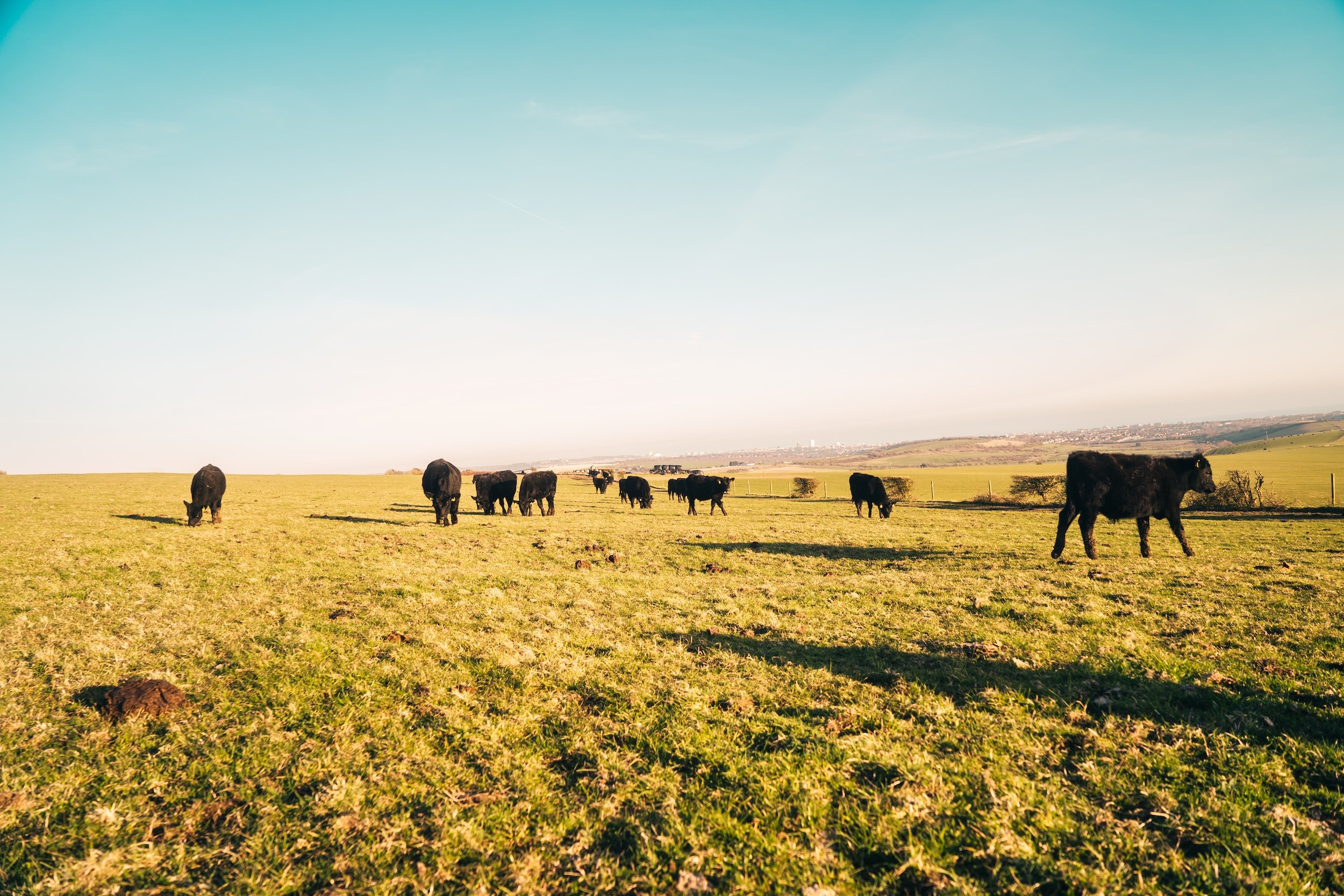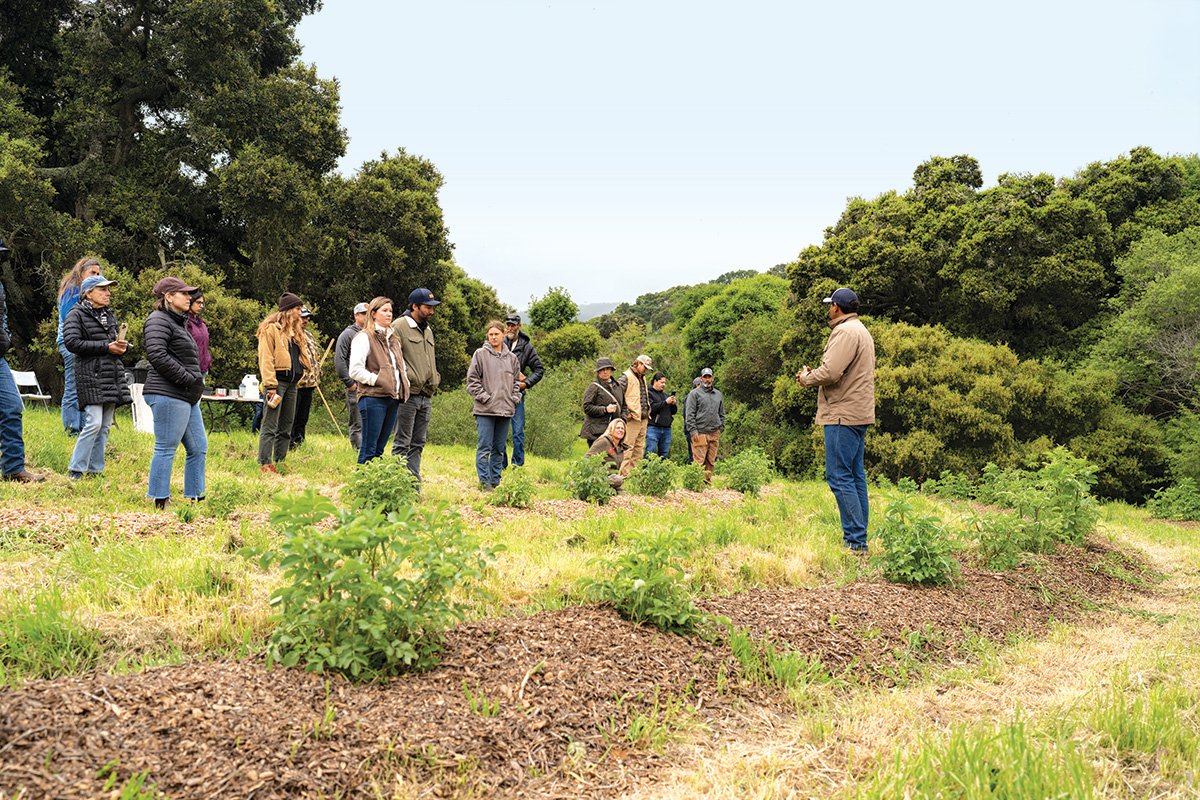
Prescribed Grazing
Wildfires in California have substantially increased in frequency and intensity over the last few decades, fueled by drought and the overgrowth of fine, dry brush.
Prescribed Grazing (also called prescribed herbivory or adaptive grazing) is gaining traction throughout Ventura and Santa Barbara counties. Prescribed grazing is the intentional use of ruminant animals (hoofed herbivores such as cows, sheep, and goats) on the landscape. Unlike conventional grazing, prescribed grazing utilizes a grazing plan that dictates the location and duration of graze periods. Goats and sheep have been used to clear brush in several Santa Barbara areas, including Parma and Elings Parks, and in neighborhoods surrounding Mission Canyon and Eucalyptus Hill. Local fire safe councils are starting to apply and receive grants from state agencies that fund climate mitigation projects, including fire prevention.
Nearly half of Ventura County’s acreage is located in very high severity zones, and that number is only expected to increase. Reducing fire risk requires a concerted effort among private and public landowners and managers. The Ojai Valley Fire Safe Council has been leading the way in Ventura County, implementing community-focused and community-driven initiatives to closely observe fire fuel reduction at work with grazing animals in some of Ojai’s most populated areas, bolstering participation in efforts to increase the Valley’s fire resilience.
Launched in 2021, OVFSC’s Community Supported Grazing Program uses targeted grazing of sheep, goats, and cattle for vegetation management and ecosystem enhancement projects in the Ojai Valley. This ecological approach is a practical and impactful alternative to chemicals and fossil fuel-dependent mechanical methods, and helps restore native vegetation. Livestock happily feed on the weeds, grasses, and dry brush that are quick to ignite and spread fires, easily moving through difficult terrain that would be hard to clear by mechanical methods. Despite the known benefits of prescribed herbivory and the promising results so far in our county, a number of administrative and economic challenges hinder broader adoption.
Currently, demand for managed grazing in Santa Barbara and Ventura County exceeds grazier capacity. Local graziers, including Michael Leicht of Ventura Brush Goats, Brittany Cole Bush of Shepherdess Land & Livestock Co, and Jack Thrift Anderson and Jenya Sarah Schneider of Cuyama Lamb LLC, have engaged with local land managers, businesses, government agencies, and other stakeholders to ensure that the broader community benefits from the community supported grazing program, and that all property owners have economic access to the program.
As part of this process, OVFSC and its grazing program partners plan to develop a “Wildfire Intensity Reduction Zone” — a grazed corridor that extends from Upper Ojai and along both sides of the Ventura River Watershed comprising approximately 3,000 acres. They also will collaborate with regional universities to develop research projects to monitor ecological factors and goals of carbon soil enhancement, and use relevant technology (e.g., GIS mapping systems) to maximize grazing benefits. The program’s success depends not only on relationship and capacity building, but reliable funding. CEC aims to help OVFSC find support in each of these areas.
The expanded Community Supported Grazing program will be a first-of-its-kind in the state, bringing together the necessary stakeholders to provide an affordable, scalable, climate-smart, and long-term solution to the growing threat of wildfire. Ensuring that Santa Barbara and Ventura Counties have the capacity to collaborate and learn from one another is key to success.
You can learn more about the Community Supported Grazing Program at OVFSC’s website: https://firesafeojai.org/project/community-supported-grazing-program/
Learn more about prescribed grazing:
Check out the San Marcos Foothills sheep grazing program, hosted by Channel Islands Restoration.
Read about how Cuyama Lamb is helping mitigate wildfire risk, saving people, property, and ecosystems.






